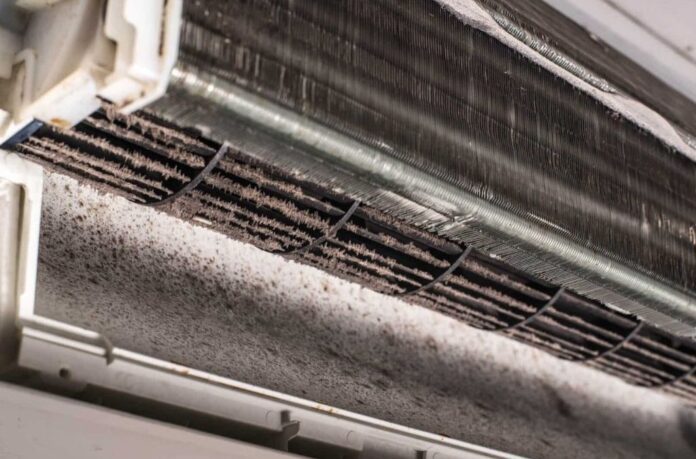Your air conditioner (AC) is a summertime lifesaver, providing a cool escape from the scorching heat. But what if your cool comfort zone is harbouring a hidden enemy – mould? While AC units play a vital role in temperature regulation, they can inadvertently create the perfect environment for mould growth if not properly maintained.
Understanding the Mold Threat:
Mold thrives in damp, warm environments. Unfortunately, air conditioners function by creating exactly that:
- Moisture Production: The cooling process naturally condenses moisture from the air, collecting it on the evaporator coil (the cold coil) inside your AC unit.
- Temperature Extremes: The cool evaporator coil creates a temperature contrast with the warm indoor air, further promoting condensation.
- Limited Airflow: Restricted airflow due to dirty air filters or blocked vents can trap moisture within the unit.
Stagnant Moisture: A Breeding Ground for Mold:
If this accumulated moisture isn’t properly drained away from the drain pan and coil, it becomes a breeding ground for mould spores. These spores, ever-present in the air, can then be circulated throughout your home by the AC unit, potentially leading to respiratory problems, allergies, and unpleasant odours.
Signs of Air Conditioning Mold:
Here’s how to identify a potential mould problem in your AC unit:
- Musty Odors: A noticeable musty smell emanating from your vents can be a telltale sign of mould growth.
- Visible Mold: Inspect the air vents and drip pan for any visible mould patches, often appearing black, green, or grey.
- Reduced Airflow: Clogged air filters and mould growth can restrict airflow, leading to reduced cooling efficiency.
- Respiratory Issues: If you experience allergy-like symptoms like sneezing, coughing, or difficulty breathing after using your AC, it could be mould-related.
Preventing Mold Growth in Your AC Unit:
Fortunately, there are steps you can take to prevent mould growth and keep your cool comfort zone mould-free:
- Regular Maintenance: Schedule professional AC cleaning and maintenance at least once a year. This includes cleaning the drain pan, evaporator coil, and air filters.
- Change Air Filters Regularly: Replace air filters every 1-3 months, depending on the filter type and usage.
- Ensure Proper Drainage: Make sure the AC drain line is clear and allows proper drainage of condensation.
- Maintain Optimal Humidity Levels: Aim for indoor humidity levels between 30% and 50% to minimize condensation.
- Breathe Easy with a Mold-Free AC Unit:
- By understanding the risks and implementing preventative measures, you can enjoy the cooling comfort of your AC without the hidden threat of mould. Take action today and ensure your cool haven offers a healthy and refreshing environment for you and your loved ones.


